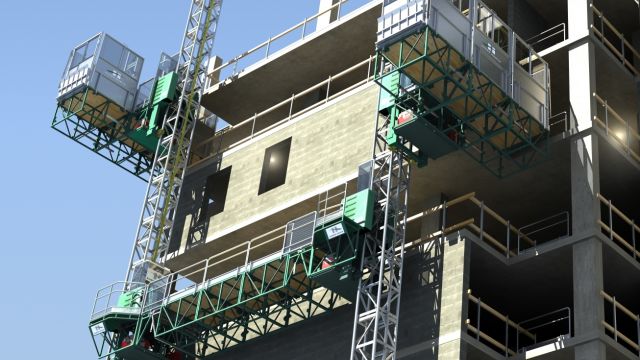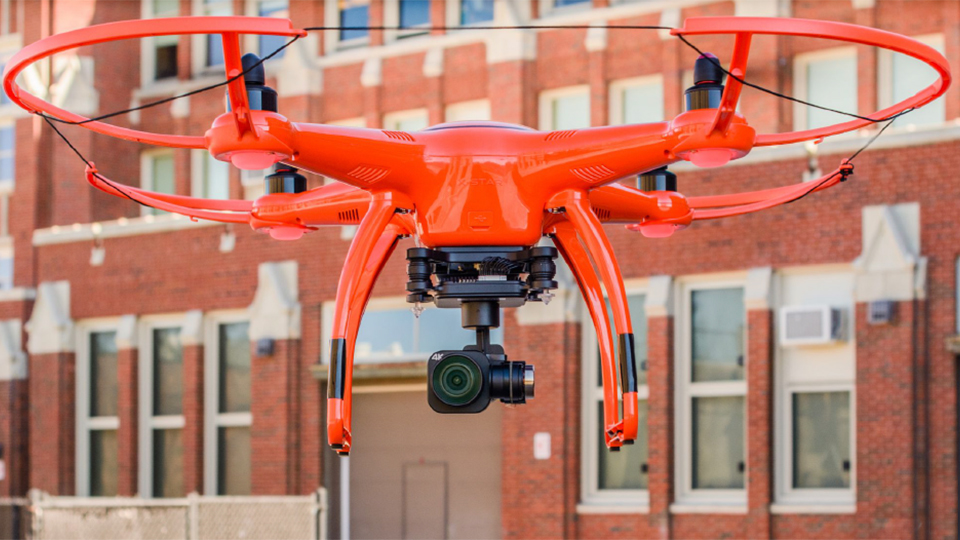Mast climber regulation and training
Mast climbers, cranes and telehanders
By Masonry
The mast climber industry has been working hard to update committee focus and standards development, always mindful of the increased potential for accidents in the period immediately following a long and hard recession.
Sony Trudel, assistant director of engineering at Hydro Mobile, is the chairman of both the Canadian Standards Association’s B354.5 and B354.6 Committees. The standards, respectively, for Mast Climbing Work Platforms and Transport Platforms are being produced in three parts, Training, Safe Use, and Design, and this format corresponds with the new format of the ANSI standards in the United States for the products.
Trudel confirmed that work is moving ahead at great speed on the new standards: “We have a committed group, and the pace of development is fantastic. When you have a group of experts who know the industry as well as these guys do, you get excellent results. The standards are on target for release at the end of 2015.”
The ANSI standards for mast climbers and transport platforms, A92.9 and A92.10, both chaired by Greg Janda from Alimak Hek, are following the same format in their re-drafting process, which is ongoing.
“This is good news for manufacturers, rental companies and users, because compliance criteria in the U.S. and Canada will almost be identical, and in the same format, streamlining ownership and use responsibilities and procedures in North America,” Trudel said.
The International Powered Access Federation has made some important changes to its focus on the mast climber industry. Members of the mast climbing industry agreed on a new constitution for the International Mast Climber Committee. The new committee, truly international in its makeup is made up of members from seven countries: Canada, United Kingdom, Spain, United States, Uruguay, Italy and Switzerland.
The scope of the committee was agreed as:
- Develop best practice guidance for the MCWP industry
- Represent the IPAF MCWP industry in government level discussions
- Encourage technical efficiency
- Encourage the highest standards of safety and good working practice
- To provide for co-operation between all members in the discussion of common problems
O’Shea identified three safety-related safety campaigns, which have been selected based on a number of accidents and near-misses experienced in the industry in the last two to three years.
Load management
Operators clearly aren’t aware of the load carrying ability of the mast climbers they happen to be working from, based on the experience of committee members. Operators need to be aware of point load restrictions, eccentric load restrictions, uniformly distributed load capability and the need to know the weight of whatever they are loading onto the platform.Fall protection
There have been a number of accidents caused by guardrail removal, insubstantial planking and the presence of trip hazards on the platform. Operators need to be aware of all fall protection issues in the platform, and need to be trained in the use, maintenance and inspection of any required fall protection equipment required on the platform.Inspections
Equipment owners are mostly unaware of all the inspection requirements placed upon them. Daily, frequent and annual inspections are required, with the relevant documentation and record-keeping requirements, and those who conduct the inspections must be qualified to carry them out.Used equipment
Additionally, at the AWPT Conference in Toronto in October, O’Shea outlined plans to provide advice to those buying used equipment. “Potential buyers of used equipment need to ask themselves a number of questions before they buy. Used equipment lies in between new equipment and equipment which is unfit for use. Is the buyer qualified to decide if a piece of equipment is ‘fit for use?’”Buyers should develop a list of questions, which will indicate if a piece of equipment is ‘fit for use,’ some areas for consideration should be:
- Does the unit(s) have a current annual inspection, and is there evidence that it was done by a completed by a qualified person?
- Is there a service history file?
- Has the equipment had any major fabrication work, and was it done by a qualified person? Get the serial numbers and check with the manufacturer for any history.
Originally published in Masonry magazine.
About the Author
Masonry, the official publication of the Mason Contractors Association of America, covers every aspect of the mason contractor profession - equipment and techniques, building codes and standards, business planning, promoting your business, legal issues and more. Read or subscribe to Masonry magazine at www.masonrymagazine.com.



















